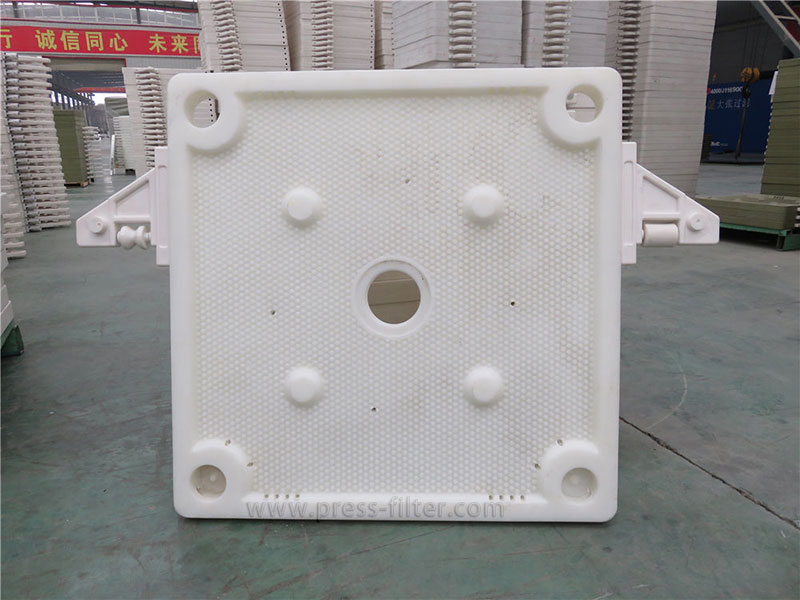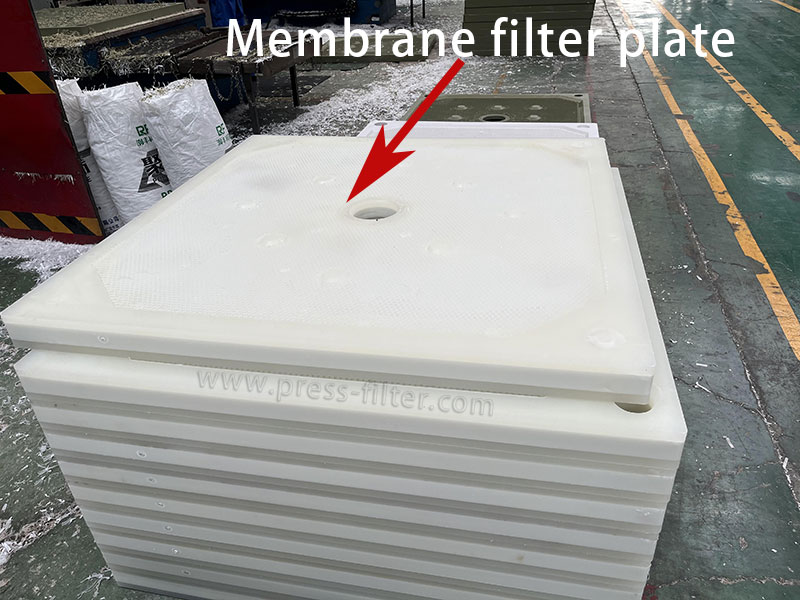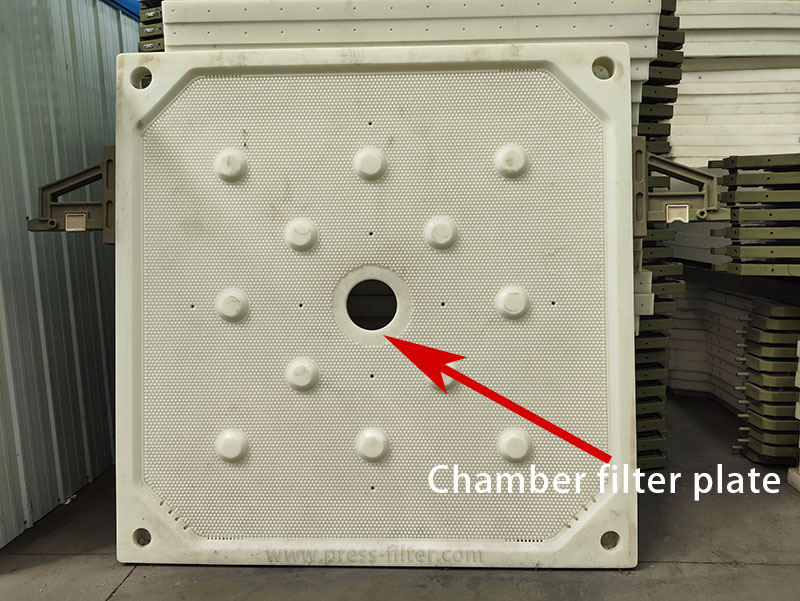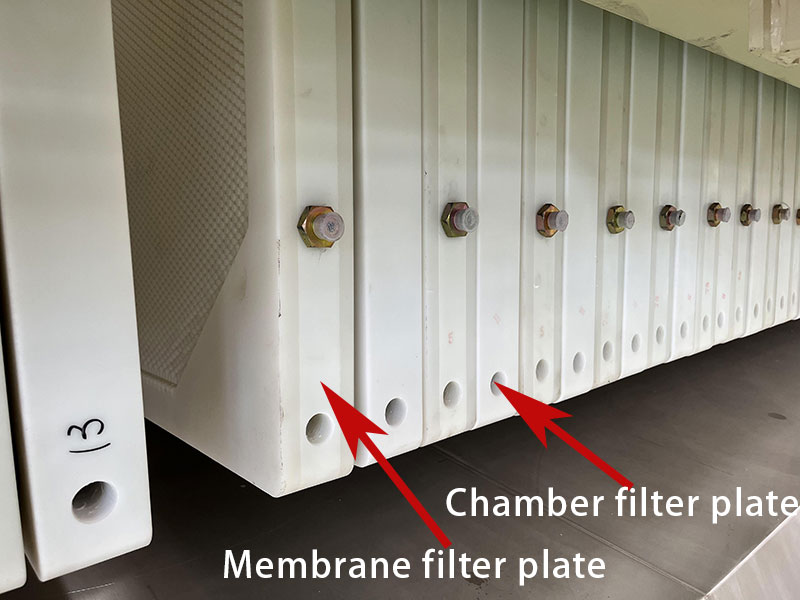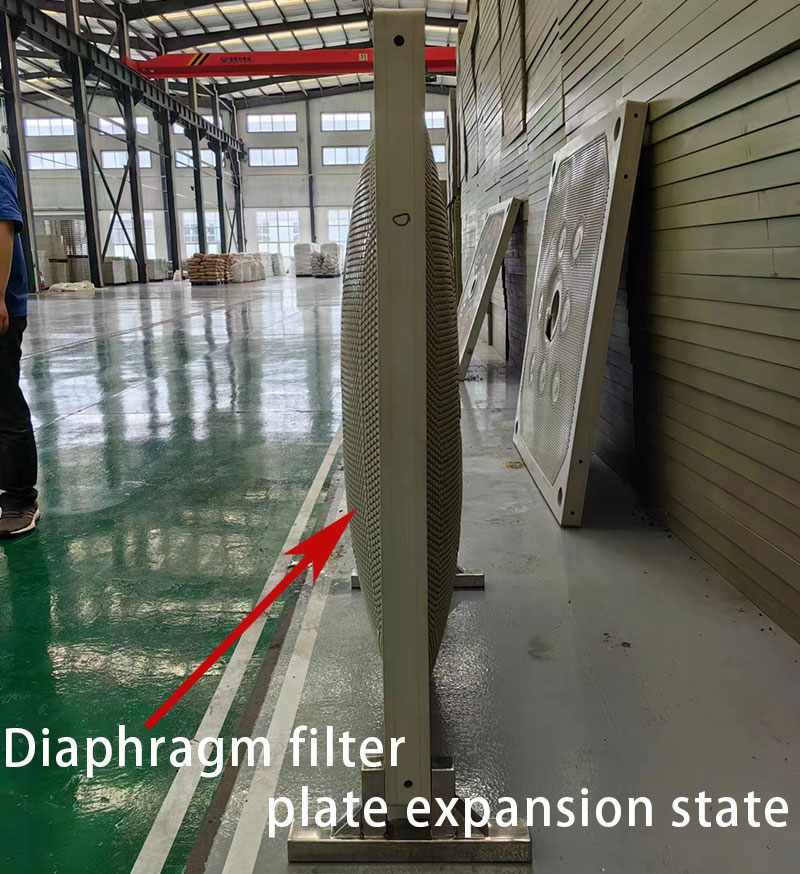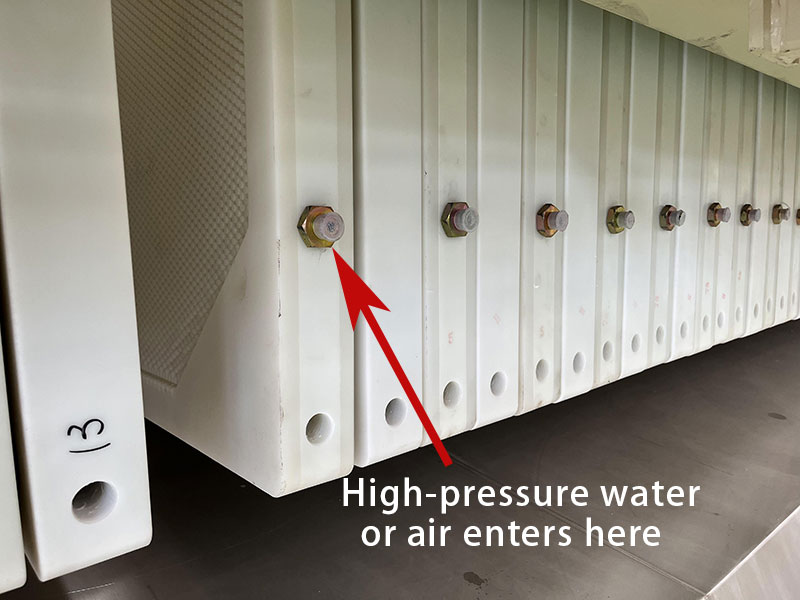The Difference Between Membrane Filter Plate and Ordinary Chamber Filter Plate
The filter plate is an indispensable part of the filter press. Different types and materials of filter plates are used on different occasions. There are significant differences between the membrane filter plate and the ordinary chamber filter plate in terms of structure and working principle. The following are their main differences.
Different Filter Plate Structures
The main difference between the diaphragm filter plate and the ordinary filter plate is that the filter plate has an additional layer of elastic diaphragm. During operation, after the slurry feeding is completed, a high-pressure medium (water or air) will be injected into the membrane of the membrane filter plates, and then the entire membrane will be bulged for secondary extrusion for the filter cakes, thereby achieving further dehydration of the filter cake and improving the dryness of the filter cake.
Ordinary filter plates are common chamber filter plates with a single structure, no internal diaphragm, and concave on both sides of the filter plate. The structure is relatively simple and mainly relies on the fixed structure of the filter plate for filtration.
Different Filter Plate Arrangements
Membrane filter plates are usually arranged alternately with a membrane plate and a chamber plate. The membrane plate contains a flexible membrane, which forms a filter chamber between the chamber plate. The membrane expands after filtration and squeezes the filter cake.
Ordinary filter plates are usually composed of all chamber filter plates, each of which is similar and has no membrane structure. The arrangement of the filter plates is relatively consistent, and all the filter plates are the same, forming multiple connected filter chambers.
Different Working Principles
Diaphragm filter plate: the material enters the filter chamber through the feed port, the solid matter is retained on the filter cloth, and the filtered liquid is discharged through the filter cloth. When the filtration stage is over, the diaphragm expands by injecting gas or liquid, and the filter cake is squeezed for the second time, which further compresses the filter cake, reduces its moisture content, and improves the dehydration effect. The squeezed filtrate is discharged through the drain port of the filter plate, completing the entire filtration process.
Ordinary filter plate: the material enters the filter chamber through the feed port, the solid matter is retained on the filter cloth to form a filter cake, and the filtrate is discharged through the drain valve. Ordinary filter plates do not have diaphragms, and the filter cake is directly discharged after the filtration process is over without a secondary squeezing process.
Different Filtering Effects
After the diaphragm filter plate is filtered, the diaphragm can expand and perform secondary squeezing on the filter cake, further reducing the liquid content in the filter cake and improving the dryness of the filter cake. Through secondary squeezing, the final moisture content of the filter cake is low, which is very suitable for occasions that require efficient dehydration.
Ordinary filter plates only rely on a single filtration process and cannot be squeezed twice, so the moisture content of the filter cake is relatively high. Due to the lack of a squeezing function for the diaphragm, the filtration efficiency and effect are not as good as those of the diaphragm filter plate.
Conclusion
In summary, there are significant differences between membrane filter plates and ordinary filter plates in terms of structure, working principle, and arrangement of filter plates. Membrane filter plates can achieve secondary squeezing, improve filtration efficiency and filter cake dehydration effect, and are suitable for high-requirements filtration needs; ordinary filter plates have simple structures and are suitable for general filtration applications. They have the advantages of easy operation and maintenance and low cost. The selection of suitable filter plates should be based on specific filtration needs and economic costs.

